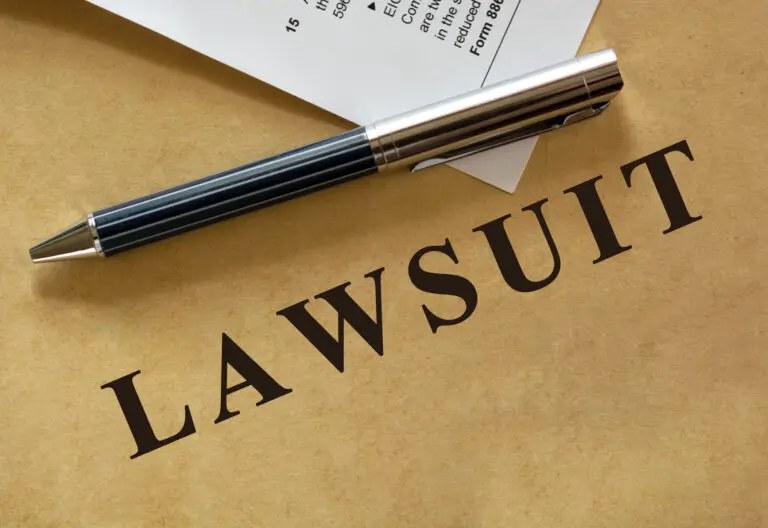When facing situations involving harassment, domestic violence, or stalking, securing a restraining order can provide a critical layer of protection. The legal process can feel daunting, but understanding the steps to get a restraining order with legal advice is essential to safeguard your rights and ensure your safety. This detailed guide will explain the process, highlight the importance of gathering evidence, and demonstrate how legal advice can make the difference in successfully obtaining a restraining order.
Understanding What a Restraining Order Is
A restraining order, also known as a protective order, is a legal document issued by a court to prevent one person from contacting or approaching another person. These orders are often used in cases involving violencia doméstica, stalking, or harassment. Restraining orders can prohibit the abuser from making contact with the victim, going near their home, workplace, or school, and, in some cases, can include additional restrictions like child custody orders or the removal of firearms from the abuser.
The specific steps to get a restraining order vary depending on your location, but the general process remains consistent across the United States. The steps outlined in this article will help you understand the process, and with proper legal guidance, you can navigate the system more confidently.
Step 1: Identify the Type of Restraining Order You Need
Before proceeding, it is important to determine which type of restraining order is appropriate for your situation. There are several types, each designed to address specific circumstances:
- Emergency Protective Order (EPO): An EPO is often granted in urgent situations, such as when law enforcement is called to the scene of a domestic violence incident. These orders are typically short-term, lasting only a few days, until a formal hearing can take place.
- Temporary Restraining Order (TRO): This type of order is typically sought when a victim is seeking immediate protection. A TRO can be obtained relatively quickly and lasts until a court hearing is scheduled, usually within a few weeks.
- Permanent Restraining Order: After a hearing, the court may issue a permanent restraining order, which can last for several years. These orders are generally granted after a judge has heard the evidence from both sides.
- Domestic Violence Restraining Order (DVRO): Specific to cases of violencia doméstica, this type of restraining order is designed to protect victims from abuse by a spouse, partner, or family member.
- Civil Harassment Restraining Order: This is intended for cases where the individual seeking protection does not have a close relationship with the person they are trying to restrain, such as neighbors or coworkers.
Determining which type of restraining order you need is the first step in the process. Seeking asesoramiento jurídico at this stage can help clarify which type best fits your situation and guide you in filing the correct paperwork.
Step 2: Gather Evidence to Support Your Case
Once you have identified the type of restraining order you need, the next step is to gather evidence that supports your case. Evidence is crucial to proving that you are in danger and that the restraining order is necessary for your protection. This can include:
- Documentation of Harassment or Abuse: Keeping a record of any threatening messages, emails, or social media posts is critical. Screenshots, recordings, and other forms of written communication can serve as solid proof in court.
- Police Reports: If law enforcement has been involved in the situation, obtaining copies of any police reports or records of previous complaints can strengthen your case.
- Historiales médicos: If physical harm has occurred, medical records documenting injuries or hospital visits should be included in your evidence.
- Testimonios de testigos: Statements from witnesses who have observed the harassment or abuse can also be valuable. These individuals may be called to testify in court or submit written affidavits.
Having strong evidence is key to convincing the court that the restraining order is necessary. Consulting with an attorney or legal expert can help you determine which pieces of evidence are most relevant to your case and how to present them effectively in court.
Step 3: File the Appropriate Paperwork
After gathering the necessary evidence, the next step is to file the appropriate paperwork with the court. The forms required to obtain a restraining order can usually be found at your local courthouse or on its website. These forms typically include:
- A petition for a restraining order, in which you will explain why you are seeking the order.
- A declaration, which is a sworn statement that details the incidents of harassment, abuse, or threats.
- Additional forms, such as a confidential information sheet, may be required, depending on the jurisdiction.
Filing the paperwork can be overwhelming, especially for individuals unfamiliar with the legal system. This is where asesoramiento jurídico becomes invaluable. An experienced attorney can assist in filling out the forms accurately and ensuring that you meet the court’s requirements.
In some cases, your attorney can file the paperwork on your behalf, ensuring that all deadlines are met and the petition is filed in the appropriate jurisdiction.
Step 4: Attend the Court Hearing
Once the paperwork is filed, the court will typically schedule a hearing to review your request for a restraining order. In the case of a temporary restraining order, the hearing may take place within a few weeks.
During the hearing, you will need to present your case to the judge, explaining why the restraining order is necessary. This is your opportunity to provide evidence, call witnesses, and make a compelling argument for why the court should grant the order. The individual against whom the order is being sought will also have the opportunity to present their side of the story.
It is critical to be well-prepared for the hearing. Representación jurídica can be particularly beneficial here, as an attorney can help you organize your evidence, present your case effectively, and respond to any counterarguments made by the opposing party.
Step 5: Follow Through with the Restraining Order
If the judge grants the restraining order, it is important to understand the terms and follow through accordingly. The order will detail the specific restrictions placed on the individual, such as no-contact provisions or orders to stay away from certain locations.
It is also essential to keep a copy of the restraining order with you at all times. In the event that the order is violated, you should contact law enforcement immediately. Violating a restraining order is a serious offense, and the individual may face criminal charges as a result.
Legal Advice and Support Throughout the Process
Obtaining a restraining order can be an emotional and stressful experience. Having a legal advocate by your side can provide peace of mind and ensure that your rights are protected throughout the process. Attorneys who specialize in derecho de familia o domestic violence law are particularly well-equipped to handle these types of cases and can guide you through the complexities of the legal system.
Expanding Your Understanding of Restraining Orders
The legal system provides various protections through órdenes de alejamiento, but it is crucial to understand the implications of obtaining one. In some cases, individuals may also need to seek additional legal remedies, such as child custody modifications o property settlement agreements, if the restraining order involves a spouse or partner.
In situations where violencia doméstica is a factor, victims may also be entitled to compensation or restitution for any physical or emotional harm caused. It is important to explore these options with the assistance of a legal professional who can provide advice on the best course of action.
Moreover, if the situation involves a long-term pattern of harassment or abuse, victims may consider pursuing a civil lawsuit in addition to the restraining order. Civil lawsuits can provide additional protection and financial compensation, allowing victims to recover from the trauma they have experienced.
Seeking Legal Advice for Enforcement of Restraining Orders
In many cases, obtaining a restraining order is only the first step. Victims may need to enforce the order if the individual violates its terms. This can include situations where the abuser continues to contact the victim despite the no-contact provisions of the order or where the abuser tries to approach the victim’s home or workplace.
Enforcement of órdenes de alejamiento typically involves law enforcement, but legal advice is essential to ensure that the appropriate steps are taken. An attorney can help file additional complaints, seek modifications to the order, or request further protections from the court.
For individuals who have experienced repeated violations of a restraining order, it may also be possible to pursue cargos penales against the violator. Violating a restraining order is considered a serious offense, and individuals may face jail time or fines if convicted.
Conclusion: Protect Yourself Through Legal Advice
Navigating the legal system to obtain a restraining order can be challenging, but understanding the steps involved can make the process more manageable. From gathering evidence and filing the necessary paperwork to attending court hearings and enforcing the order, each step requires careful attention to detail and an understanding of the legal process.
Having asesoramiento jurídico throughout this process is crucial for ensuring that your rights are protected and that the restraining order is granted. Whether you are dealing with a situation involving violencia doméstica, harassment, or stalking, obtaining a restraining order can be a critical step in safeguarding your safety and well-being.
By understanding the steps to get a restraining order with legal advice, individuals can take proactive measures to protect themselves and seek the justice they deserve. With the right legal guidance, you can navigate this complex process and secure the protection you need.
Additional Legal Protections Beyond a Restraining Order
While obtaining a restraining order is an important step in protecting yourself from harm, it’s not the only legal remedy available. Depending on the nature of the threat or abuse, there may be additional protección jurídica that you can pursue in conjunction with the restraining order. These protections can offer greater security and peace of mind, ensuring that all aspects of your safety are addressed.
Child Custody and Family Law Considerations
In cases where a restraining order involves family members, such as a spouse or partner, it’s important to understand how the order may affect child custody arrangements. For example, if the abuser is a parent or legal guardian, the restraining order could include provisions that restrict their access to the child or limit visitation rights. This is especially relevant in situations involving violencia doméstica or abuse, where the child’s safety may also be at risk.
Family courts take child custody very seriously, and judges will often modify existing custody arrangements to ensure the safety of the child. If you are seeking a restraining order against a partner with whom you share custody of children, it is crucial to work with a family law attorney to navigate these complex legal issues. A restraining order may require supervised visitation or temporary suspension of visitation rights until the abuser can demonstrate that they are not a danger to the child.
In some cases, you may also need to file for sole custody or request a modification to the parenting plan. This legal action will require substantial evidence that the other parent poses a threat to the child’s well-being. Legal advice is essential in this process, as family law can be intricate and emotionally charged.
Financial Support and Property Division
If the restraining order involves a spouse or partner, you may also need to consider how the order will impact your financial situation. For example, if the person against whom the order is filed is financially responsible for household bills or child support, it’s important to understand how these obligations will be managed while the restraining order is in effect.
In some cases, individuals may seek spousal support o temporary financial assistance from the court as part of the restraining order process. This is particularly common in situations where one partner controls the household finances, leaving the victim without access to money. The court can order the abuser to provide temporary financial support to ensure that the victim can maintain their livelihood and care for any children involved.
Additionally, if the restraining order involves a situation where the victim and abuser share property or assets, such as a home or business, it’s important to address how these assets will be divided or managed while the restraining order is in place. In many cases, the court may issue temporary orders regarding property division, requiring one party to vacate the home or prohibiting the sale of jointly owned assets until the case is resolved.
Consultar con un abogado de derecho de familia can help you understand your rights when it comes to financial support and división de la propiedad. An attorney can guide you through the process of requesting temporary orders or filing for additional legal protections, such as a divorce or legal separation.
Civil Lawsuits for Damages
In addition to seeking a restraining order, victims of harassment, abuse, or stalking may have grounds to file a civil lawsuit against the individual responsible for the harm. Civil lawsuits can provide financial compensation for physical injuries, emotional distress, medical bills, and other damages resulting from the abuse.
Filing a civil lawsuit is a separate legal process from obtaining a restraining order, but it can offer significant benefits. For example, if you have experienced financial losses due to missed work, medical expenses, or property damage caused by the abuser, a civil lawsuit can help you recover these costs. The lawsuit may also include compensation for dolor y sufrimiento or emotional trauma, which is common in cases of long-term abuse or harassment.
Civil lawsuits can also serve as a deterrent to future harassment. By holding the abuser financially accountable, you can demonstrate that there are legal consequences for their actions, which may discourage further attempts to contact or harm you.
Working with a abogado de lesiones personales or a lawyer who specializes in litigios civiles is important if you are considering a lawsuit. An experienced attorney can help you gather evidence, file the necessary paperwork, and represent your interests in court. It’s important to understand that the burden of proof in civil cases is different from criminal cases, and having strong evidence is critical to achieving a successful outcome.
Criminal Charges and Legal Consequences for Violating a Restraining Order
Obtaining a restraining order is only part of the solution. Unfortunately, some individuals continue to violate the terms of the restraining order despite the legal consequences. If the abuser violates the order, it is essential to take immediate action by contacting law enforcement.
Violating a restraining order is a criminal offense and can result in serious consequences, including arrest, fines, and jail time. Each state has its own laws regarding the penalties for violating a restraining order, but in general, courts take these violations very seriously, especially if the violation involves physical harm or threats of violence.
If the individual violates the restraining order, you can work with your attorney to file a contempt of court motion, which will bring the violation to the judge’s attention. The court may impose additional restrictions on the abuser or increase the penalties for future violations.
In some cases, repeated violations of a restraining order may result in criminal charges, such as acecho, acosoo violencia doméstica. These charges can lead to more severe penalties, including longer jail sentences or mandatory participation in anger management or rehabilitation programs.
It’s important to work with law enforcement and your attorney to ensure that the restraining order is enforced and that your safety is maintained. Legal advice can help you understand your rights and ensure that any violations are addressed promptly.
Modifying or Extending a Restraining Order
Restraining orders are often issued for a specific period of time, but in some cases, you may need to extend the order or request modifications to its terms. For example, if the abuser continues to pose a threat after the restraining order expires, you may need to petition the court to extend the order.
Additionally, if your circumstances change—such as moving to a new location or changing jobs—you may need to modify the restraining order to reflect these changes. This is particularly important if the original order includes specific locations that the abuser is prohibited from entering, such as your home or workplace.
In some cases, the court may grant a permanent restraining order, which can remain in effect indefinitely. This is typically reserved for situations where the victim is at a significant and ongoing risk of harm, such as in cases of violencia doméstica or severe stalking.
Consulting with a lawyer is essential when seeking modifications or extensions to a restraining order. Your attorney can help you file the necessary paperwork, present evidence of the ongoing threat, and advocate on your behalf in court.
Support Resources for Victims of Abuse and Harassment
In addition to legal remedies, it’s important to be aware of the various support resources available to individuals who are seeking restraining orders or dealing with abuse and harassment. Many nonprofit organizations, shelters, and advocacy groups offer support services, including:
- Counseling and therapy for victims of abuse
- Legal aid and representation for individuals who cannot afford an attorney
- Emergency shelters for individuals escaping abusive situations
- Hotlines and crisis support, such as the National Domestic Violence Hotline
These resources can provide additional assistance and support during the restraining order process, helping victims regain control of their lives and move forward safely.
Conclusion: Taking Legal Action for Your Protection
Obtaining a restraining order with legal advice is a crucial step in protecting yourself from harassment, abuse, or stalking. However, the process is multifaceted and requires a clear understanding of the legal system. From filing the initial paperwork and presenting evidence in court to enforcing the order and seeking additional protections, having an attorney by your side is essential.
In addition to the restraining order, there may be other recursos jurídicos available to you, including modifications to child custody arrangements, financial support, demandas civilesy cargos penales for violations. With the right legal guidance, you can navigate these challenges and ensure that your rights and safety are upheld.
By understanding the steps to get a restraining order, gathering the necessary evidence, and seeking legal advice, you can take control of the situation and secure the protection you need. Taking legal action can be intimidating, but with the right support, you can safeguard your well-being and regain peace of mind.









